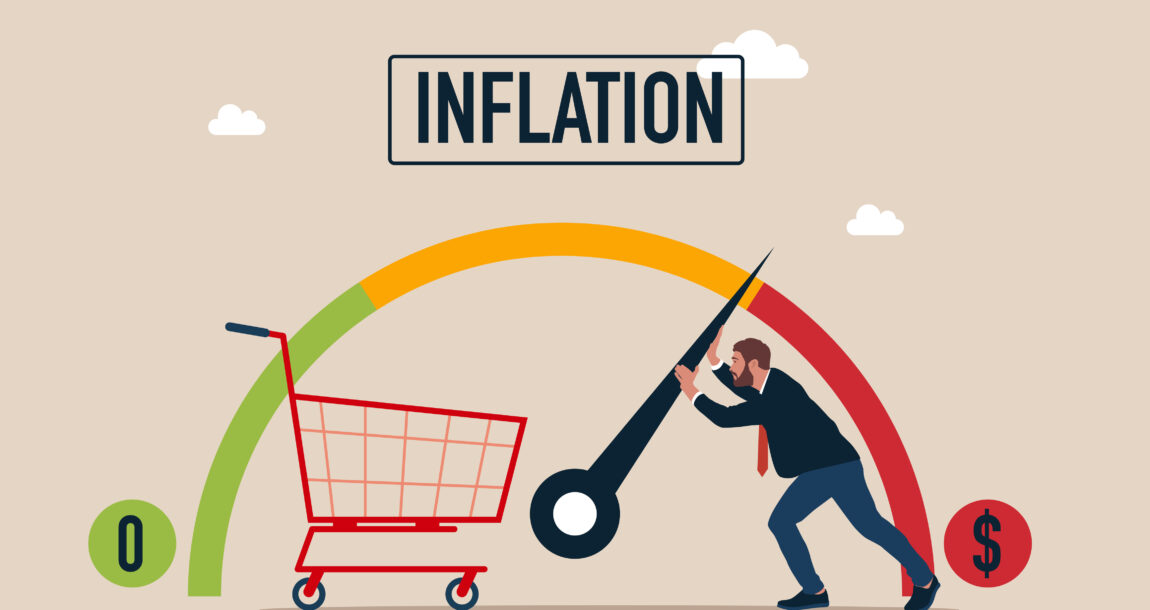Has the Federal Reserve tamed the inflation beast?

There were some promising signs for inflation in new numbers contained in the government’s Consumer Price Index report for March released this week. Prices are still going up — 5% year over year in the CPI’s basket of goods and services – but it was the smallest increase in more than two years.
Food prices were up 8.6%from a year ago, after ballooning an average of 10% in the last year. Energy costs fell 6.4%, and included a 17% drop in gas prices from a year ago. Used car prices, which heavily impacted inflation, fell more than 11%.
The core CPI, which discounts food and energy and is considered by some a more accurate inflation indicator, rose 5.6%
The numbers led some economists and experts to say the era of the deflationary process is upon us. Others weren’t so sure.
“To say that the Fed has tamed inflation would be a stretch,” said Santiago Guzman, co-founder & CEO at Cap8, a capital management firm in Boston. “Even when we were expecting inflation to continue this trend, getting close to the Fed’s target of 2% could be harder to accomplish. Getting to those levels will depend on how structural changes in price stability have become and the impact of higher rates on economic activity.”
Fed may be done with aggressive hikes
However, Guzman and others believe the Fed is done with aggressive interest rate hikes.
“Considering that employment levels continue to show resiliency in this inflationary trend, we expect a soft landing and are cautiously optimistic,” he said.
Others saw good news in the numbers but with some caveats.
“The disinflationary process continues, but the Fed’s job isn’t done,” said Garrett Melson, portfolio strategist at Natixis Investment Managers Solutions, in Boston. “While there are risks, growth remains robust, labor markets are normalizing, and inflation is moderating. The path to a soft landing may still be very much on the table.”
March CPI represents 'massive decline'
The March headline CPI was a welcome surprise, Melson said. It came in a 0.053%, versus an estimate of 0.2%.
“On a year-to-year basis, this represents a massive decline of 1%, falling from 6.0% to 5.0% as the energy-driven surge of March 2022 rolled off,” he said.
Still, housing remains a stickier issue. Shelter costs, which make up a huge chunk of the CPI, were up about 8.2% over the year.
Fed Chairman Jerome Powell predicts housing prices will moderate in the coming months but hinted that another rate hike might be in the cards. The market expects another quarter point increase at next month’s meeting of the Fed. The Fed staff is still expecting a mild recession, according to notes from the central bank’s meeting in March.
"It certainly looks like the Fed has tamed inflation, especially given the drop from 6% to 5% year over year, and with only a 0.1% increase month over month,” said Oliver Rust, head of product at independent inflation data aggregator Truflation, based in San Francisco. “However, the driver of this decline is energy costs – in particular gas and fuel oil – and these are areas where their commodity prices are increasing again. So that is certainly a worry.”
In addition, Rust said, the fact that core inflation is not showing signs of slowing down is also worrying.
“In my view, this is going to keep an interest rate hike of 25 basis points firmly on the table for the FOMC’s May meeting as I don’t think we are out of the woods yet,” he said.
Doug Bailey is a journalist and freelance writer who lives outside of Boston. He can be reached at doug.bailey@innfeedback.com.
© Entire contents copyright 2023 by InsuranceNewsNet.com Inc. All rights reserved. No part of this article may be reprinted without the expressed written consent from InsuranceNewsNet.com.





Colorado study: wildfires, hail behind steep property insurance hikes
How an agent can effectively counter life insurance objections
Advisor News
- Americans increasingly worried about new tariffs, worsening inflation
- As tariffs roil market, separate ‘signal from the noise’
- Investors worried about outliving assets
- Essential insights a financial advisor needs to grow their practice
- Goldman Sachs survey identifies top threats to insurer investments
More Advisor NewsAnnuity News
- AM Best Comments on the Credit Ratings of Talcott Financial Group Ltd.’s Subsidiaries Following Announced Reinsurance Transaction With Japan Post Insurance Co., Ltd.
- Globe Life Inc. (NYSE: GL) is a Stock Spotlight on 4/1
- Sammons Financial Group “Goes Digital” in Annuity Transfers
- Somerset Reinsurance Announces the Appointment of Danish Iqbal as CEO
- Majesco Announces Participation in LIMRA 2025: Showcasing Cutting-Edge Innovations in Insurance Technology
More Annuity NewsHealth/Employee Benefits News
- Idaho Senate approves Medicaid budget
- John Oliver sued by health care boss
- Pharmacy bill passes House committee
- Lowering the cost of insurance in Colorado – a new analysis of the Peak Health Alliance
- University of Toronto Reports Findings in Alopecia [The Dermatologist Is Out? Assessment of Dermatologists In Ontario Accepting Ontario Health Insurance Plan (Ohip) Referrals for Hair Loss Evaluation]: Skin Diseases and Conditions – Alopecia
More Health/Employee Benefits NewsLife Insurance News
- Revised Proxy Soliciting Materials (Form DEFR14A)
- Proxy Statement (Form DEF 14A)
- Exemption Application under Investment Company Act (Form 40-APP/A)
- AM Best Affirms Credit Ratings of CMB Wing Lung Insurance Company Limited
- Council agrees to settlement for animal welfare division
More Life Insurance News